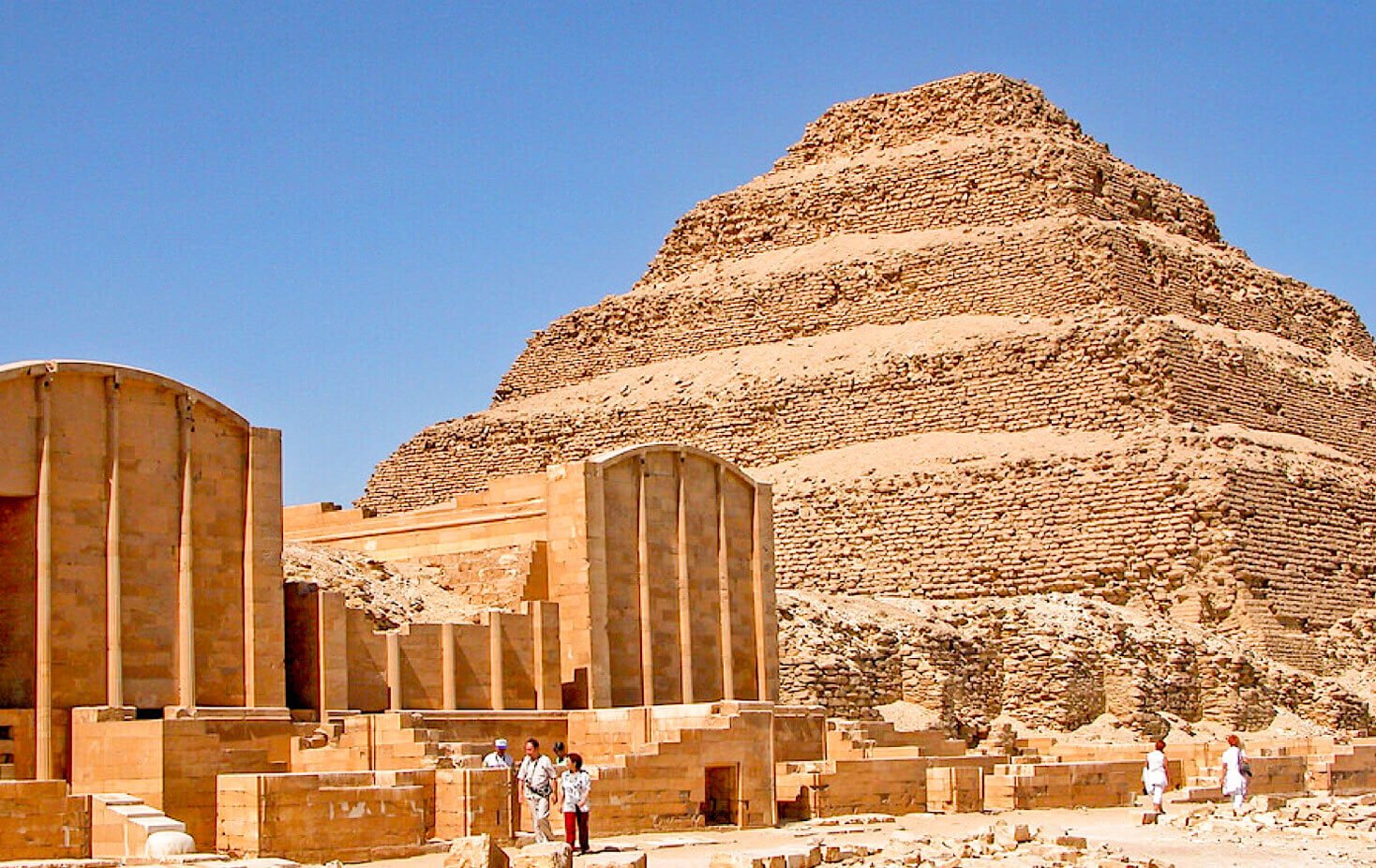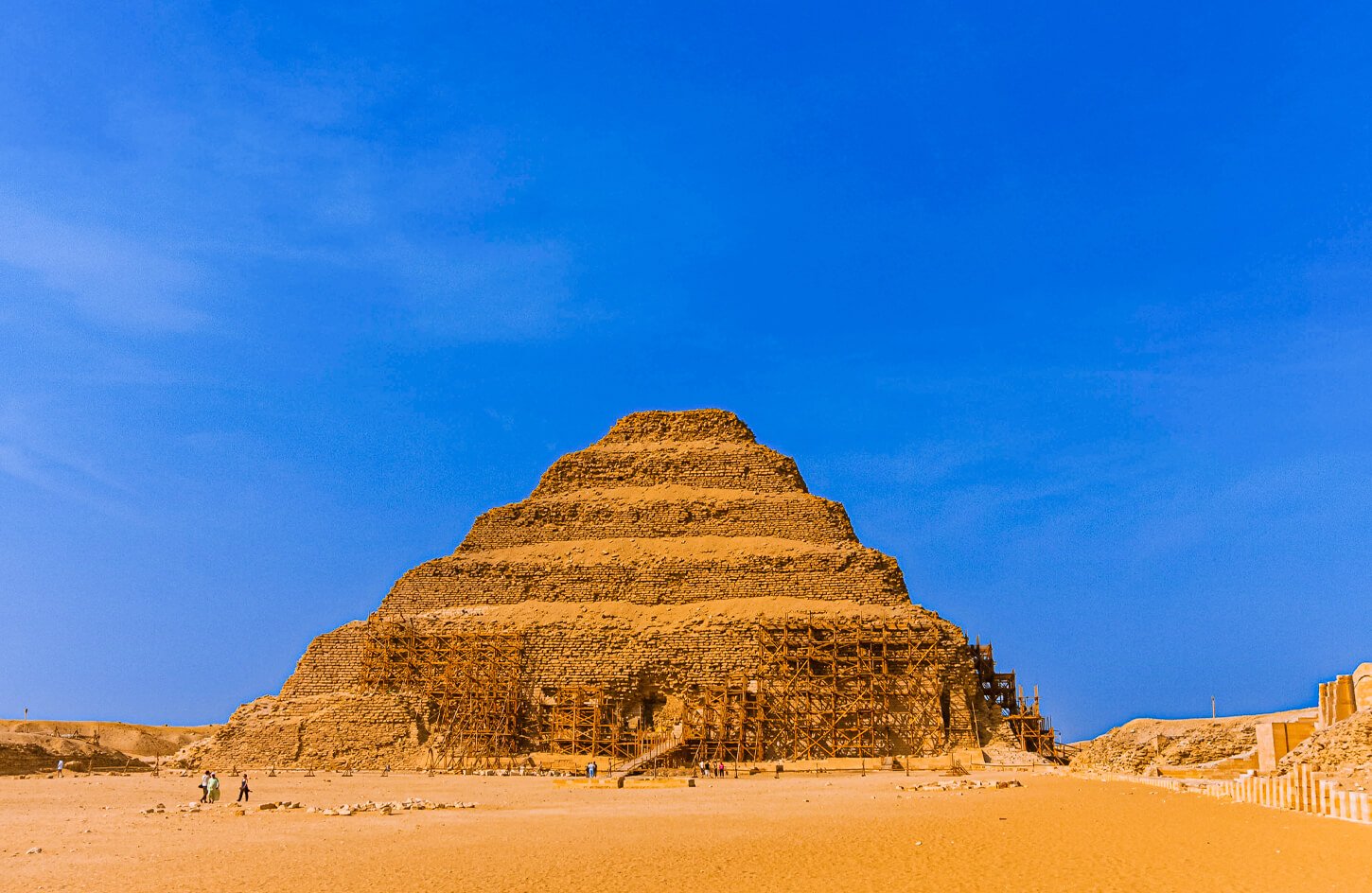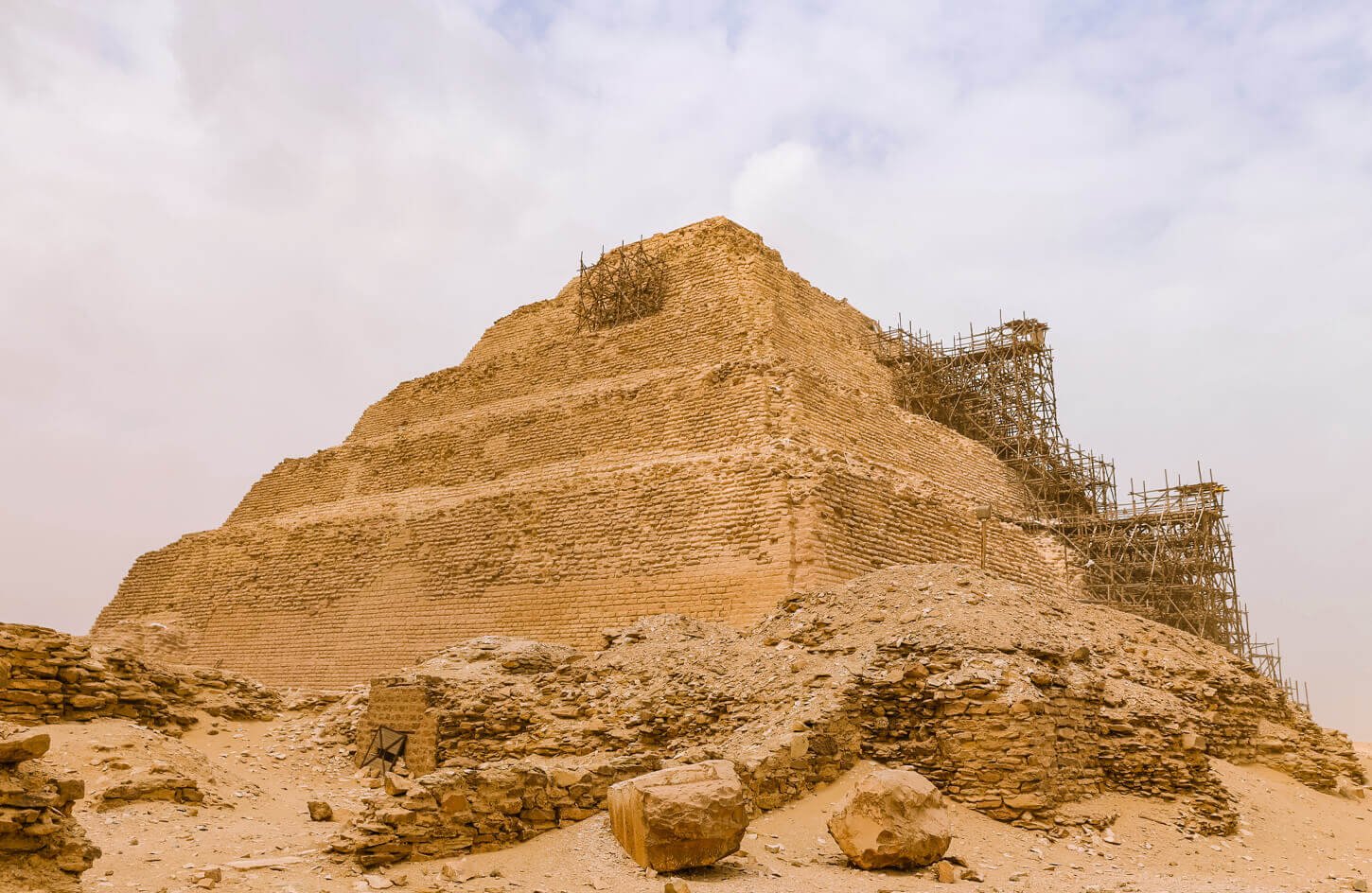The Djoser Step Pyramid, located in Saqqara, Egypt, is an architectural wonder that stands as a testament to ancient Egypt’s ingenuity and advanced civilization. Constructed during the 27th century BCE, it is considered the earliest colossal stone building and a remarkable milestone in the evolution of pyramid construction.
In this blog post, we embark on a captivating journey to explore the Djoser Step Pyramid, unravel its historical context, delve into its architectural wonders, understand its cultural and religious significance, and provide essential information for those planning to visit this wonderful ancient site.
The Importance of the Pyramid in Ancient Egypt
The Djoser Step Pyramid holds immense significance in the history of ancient Egypt. It symbolizes the transition from mastaba-style tombs to pyramids and represents a groundbreaking shift in architectural design and engineering capabilities. This pyramid marked the beginning of a new era and served as the final resting place of Pharaoh Djoser, the second ruler of the Third Dynasty.

The History of the Djoser Step Pyramid
1. Construction period and builders
The construction of the Djoser Step Pyramid took place over several years under the guidance of Imhotep, an architect, high priest, and polymath of ancient Egypt. Imhotep’s visionary approach revolutionized pyramid design, paving the way for future monumental structures.
2. Architectural design and significance
The Djoser Step Pyramid’s architectural design was groundbreaking for its time. Comprising six distinct tiers, or steps, the pyramid rose to approximately 200 feet (60 meters). It was constructed using limestone blocks, meticulously carved and arranged to create a striking geometric structure that captured the ancient Egyptians’ awe.
3. Religious and cultural significance
Beyond its architectural marvels, the Djoser Step Pyramid holds profound religious and cultural importance. The pyramid’s design and purpose were deeply rooted in the ancient Egyptian belief system, particularly the Pharaoh’s journey to the afterlife. It served as a conduit for the ruler’s ascension to the heavens, ensuring their eternal legacy and the kingdom’s prosperity.

Design and Structure of the Pyramid
1. Description of the pyramid’s structure
The Djoser Step Pyramid’s unique design features six gradually diminishing steps, each adorned with ornate facades and intricate reliefs. The inner chambers and corridors hold hidden treasures, showcasing the ancient Egyptians’ mastery of architecture and engineering.
2. Materials used in construction
The pyramid was primarily constructed using locally sourced limestone, meticulously cut and shaped to fit precisely together. The precision of the masonry work is a testament to the advanced techniques employed by the skilled craftsmen of the time.
3. Unique features of the pyramid
One of the most remarkable features of the Djoser Step Pyramid is its innovative underground labyrinth. This intricate network of tunnels and chambers held great religious significance and was pivotal in Pharaoh Djoser’s burial rituals. The pyramid’s complex design and the labyrinth beneath make it an architectural marvel that continues to captivate visitors and scholars alike.
Exploration and Restoration of the Pyramid
1. Discovery and exploration of the pyramid
The Djoser Step Pyramid’s significance was largely forgotten until its rediscovery in the early 19th century. Scholars and archaeologists excavated extensively to uncover its secrets, shedding light on ancient Egyptian culture and rituals.
2. Restoration and preservation efforts
Recognizing the historical and cultural value of the Djoser Step Pyramid, restoration and preservation initiatives have been undertaken to safeguard this ancient wonder. Skilled conservationists have worked diligently to stabilize and protect the pyramid’s structure from further deterioration.
The Current state of the pyramid
Today, visitors can witness the magnificence of the Djoser Step Pyramid, albeit with certain restrictions to preserve its integrity. The pyramid is a testament to human ingenuity and offers an extraordinary glimpse into the distant past of ancient Egypt.

Significance of the Djoser Step Pyramid
1. Influence on future pyramid designs
The Djoser Step Pyramid laid the foundation for subsequent pyramid construction in ancient Egypt. Its design and engineering techniques paved the way for the Great Pyramids of Giza and numerous other monumental structures.
2. Cultural and religious significance
The pyramid’s cultural and religious importance cannot be overstated. It was a focal point for worship and was crucial in ancient Egyptian religious rituals and ceremonies. The pyramid’s symbolism and grandeur profoundly impacted the spiritual beliefs and practices of the ancient Egyptians.
3. Impact on ancient Egyptian society
The Djoser Step Pyramid’s construction and cultural significance had a far-reaching impact on ancient Egyptian society. It served as a testament to the Pharaoh’s authority, reinforced social hierarchies, and demonstrated the kingdom’s power and prosperity.
Visiting the Djoser Step Pyramid
Location and accessibility
The Djoser Step Pyramid is located in Saqqara, approximately 30 kilometers south of Cairo, Egypt. It is easily accessible by car or organized tours from major cities and tourist hubs.
Tourist attractions and activities in Saqqara
Saqqara offers many fascinating tourist attractions and activities that complement the visit to the Djoser Step Pyramid. Here are some noteworthy highlights:
- Saqqara Necropolis: Explore the vast Saqqara Necropolis, a sprawling ancient burial ground that houses numerous tombs and structures. Among the notable tombs is the Mastaba of Ti, known for its well-preserved reliefs depicting scenes of daily life in ancient Egypt.
- Imhotep Museum: Immerse yourself in the rich history of the Djoser Step Pyramid and its architect, Imhotep, at the Imhotep Museum. This modern museum showcases a remarkable collection of artifacts, including statues, tools, and architectural fragments, shedding light on the pyramid’s construction techniques and religious significance.
- Tomb of Ptahhotep: Visit the Tomb of Ptahhotep, one of the most famous tombs in Saqqara. This well-preserved Mastaba tomb features captivating wall paintings that offer insights into ancient Egyptian society, depicting scenes of daily life, agriculture, and religious rituals.
- Tomb of Mereruka: Step into the elaborate Tomb of Mereruka, the largest mastaba tomb in Saqqara. This tomb vividly depicts the wealth and importance of Mereruka, who served as a high-ranking official during the reign of Pharaoh Teti. The intricate reliefs and hieroglyphics narrate stories of Mereruka’s life and his afterlife expectations.
- Step Pyramid of Teti: While exploring Saqqara, take a moment to admire the Step Pyramid of Teti. Although less renowned than the Djoser Step Pyramid, it is a well-preserved pyramid complex that holds historical significance as the burial place of Pharaoh Teti, the founder of the Sixth Dynasty.
- Saqqara Papyrus Institute: A visit to the Saqqara Papyrus Institute is necessary for those interested in ancient Egyptian art and craftsmanship. Witness the meticulous process of papyrus-making, from the reeds’ cultivation to the creation of vibrant paintings and hieroglyphic inscriptions on this traditional medium.
Saqqara’s wealth of archaeological wonders and authentic cultural experiences ensure an enriching and memorable visit. Immerse yourself in the ancient splendor and vibrant heritage of this remarkable destination.
Tips for visiting the pyramid
When visiting the Djoser Step Pyramid, it is advisable to plan, wear comfortable clothing and footwear, and carry essential supplies such as water and sun protection. Respecting the site’s historical and cultural significance is crucial, as is following any guidelines and restrictions to preserve this ancient wonder.
Conclusion
The Djoser Step Pyramid is a testament to ancient Egypt’s architectural achievements and religious beliefs. Its historical significance, cultural importance, and innovative design make it a compelling destination for history enthusiasts and curious travelers.
Visiting the Djoser Step Pyramid offers a remarkable opportunity to connect with the awe-inspiring wonders of ancient Egypt. It is a journey through time, providing a glimpse into the ingenuity, craftsmanship, and profound spirituality of one of the world’s most captivating civilizations.
Embark on an unforgettable expedition to the Djoser Step Pyramid in Saqqara and witness the wonders of ancient Egypt firsthand. Discover the marvels of ancient architecture, immerse yourself in the rich tapestry of history, and unravel the enigmatic.


0 Comment